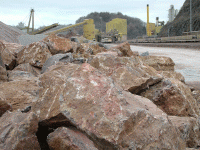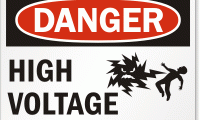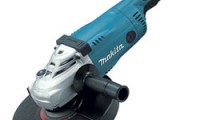Even in a large, open-air area such as a quarry, the dangers of confined spaces still exist. Despite the fact that you’d think there was unlikely to be confined spaces in these environments, confined spaces are often located within equipment, below ground and in other applications with a quarry.
A quarry should not be dismissed as being unsuitable for confined space inspections; in fact, due the nature of dangerous work that can take place within, the confined space and general risk assessment of all equipment and installations is of the utmost importance to ensure the safety of those working within the quarry at all times.
It is the responsibility of an employer to ensure that those working with potentially dangerous confined spaces are given the necessary knowledge, training and specialist equipment in order to work safely within the enclosed area. It is also the employer’s responsibility to define risks within the workplace and supply documentation and recommendations based upon these findings.
Negligence in completing these tasks can lead to extreme consequences. Lives have been lost, grave injuries have been inflicted and huge fines are leveraged at companies who neglect their risk assessment/confined space legislation and practice.
The following example is just one of many horror stories that have happened within confined spaces due to incorrect training, equipment or other aspects.
9th February 2008 – Quarry Death in Somerset
During routine maintenance within a quarry in the Somerset area on a piece of machinery known as a hopper that is used to disperse granular material through a chute in order to restrict flow, a man lost his life.
Neal Webber, a 28 year old from Wiltshire, was inside the hopper trying to move compacted material from the inside of the hopper when the material he and his colleague were standing on suddenly collapsed from beneath their feet. Mr Webber was instantly buried under approximately 12 tonnes of limestone dust and suffocated underneath the crushing weight, while his colleague was only saved because the safety harness he was wearing was shorter than Mr Webber’s. The colleague was able to escape from the hopper as he was only buried up to his chest.
General practice when working within confined spaces is to only enter as a very last resort. Any reasonable practicable method of carrying out the work without directly entering the enclosed environment must be assessed and undertaken before direct entry takes place as this poses significant risk to the person entering. If entry is unavoidable, the person must have the training and equipment necessary to be able to do the work safely. A qualified rescue team should also be on standby should an incident occur.
In the case of Neal Webber, none of these practices were observed and put into practice. The HSE (Health and Safety Executive) who looked into the deaths had the following to say about the incident:
“Entering a hopper like this must be a last resort after all other possible methods of clearing compacted material have been considered and ruled out – and even then it needs to be very carefully planned and organised.
“In this case the parties involved did not consider an alternative to entering the hopper to clean the compacted material. The equipment and work method used in this case were not a safe option. If firms are going to send men into confined spaces they must be more rigorous with the safety systems they have in place.
“Because of this tragic incident two young children have been left without a father and Mr Myers was left traumatised by being buried up to his chest in limestone dust and being unable to rescue his workmate.”
At court the prosecution found that the firm that employed the two affected by the confined space incident and a person who was currently trading with the quarry firm were responsible for the incident because of breaches to the Health and Safety at work etc Act 1974 and the Confined Spaces Regulations 1997.
The quarry firm was fined more than £25000 while the individual was fined £10000. Of course the monetary damage was nothing to that inflicted on the families of those involved in the incident, particular Claire Webber, who was widowed as a result of Neal’s death.
She said: “Overnight, everything in our lives changed. It is now nearly four years since Neal died and the girls still miss their dad and have their ups and downs emotionally in dealing with it.
“I have obviously been affected as well and financially it has not been easy either. We married when I was 17 and we were both working full-time at the time of the incident. Now in order to look after Emily and Ashleigh I have become dependent on benefits, which has not been easy to cope with.”
Had the correct confined space training and equipment been provided and enforced, this death and incident could have been avoided. Incidents just like this take place in industries every day around the world – often the person(s) involved escape unscathed and the incident goes unreported but countless others have lost their lives due to a lack of awareness of confined space dangers.
Don’t risk your life – make sure you know all about confined spaces, their dangers and how to work correctly around them. If at all possible, don’t enter the space at all and carry out work in a different way using specialist equipment.








